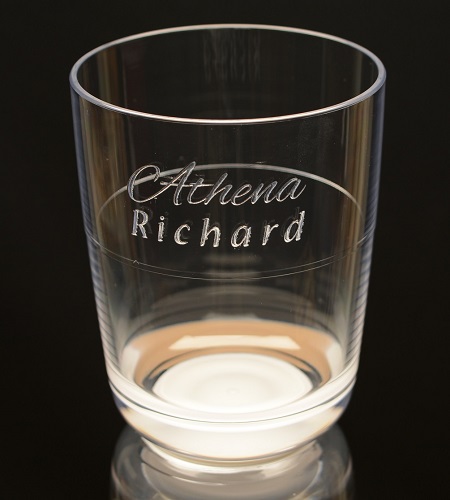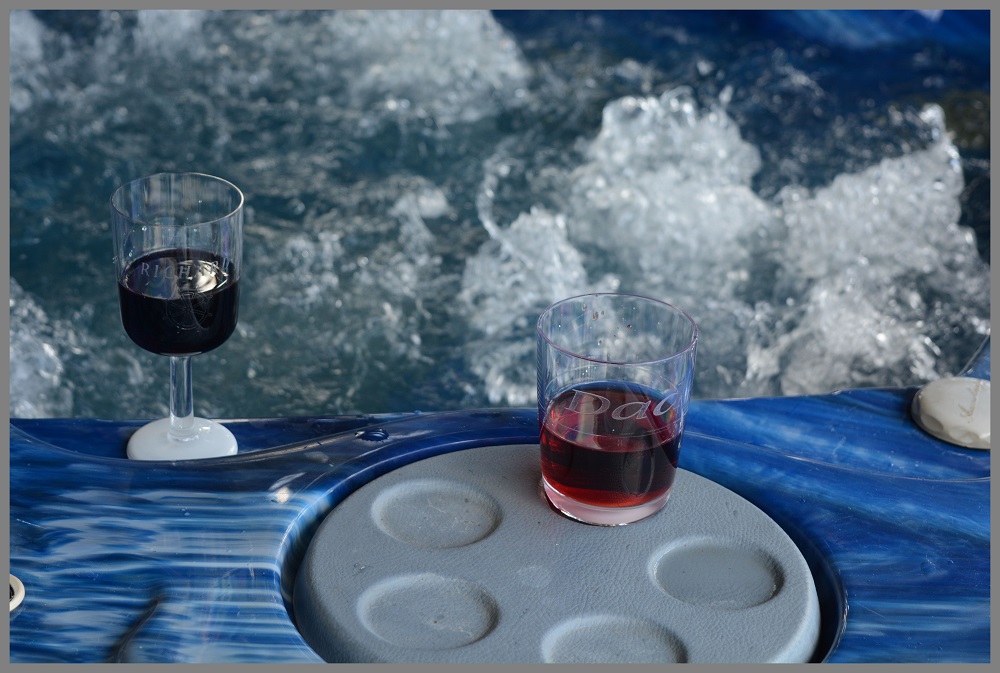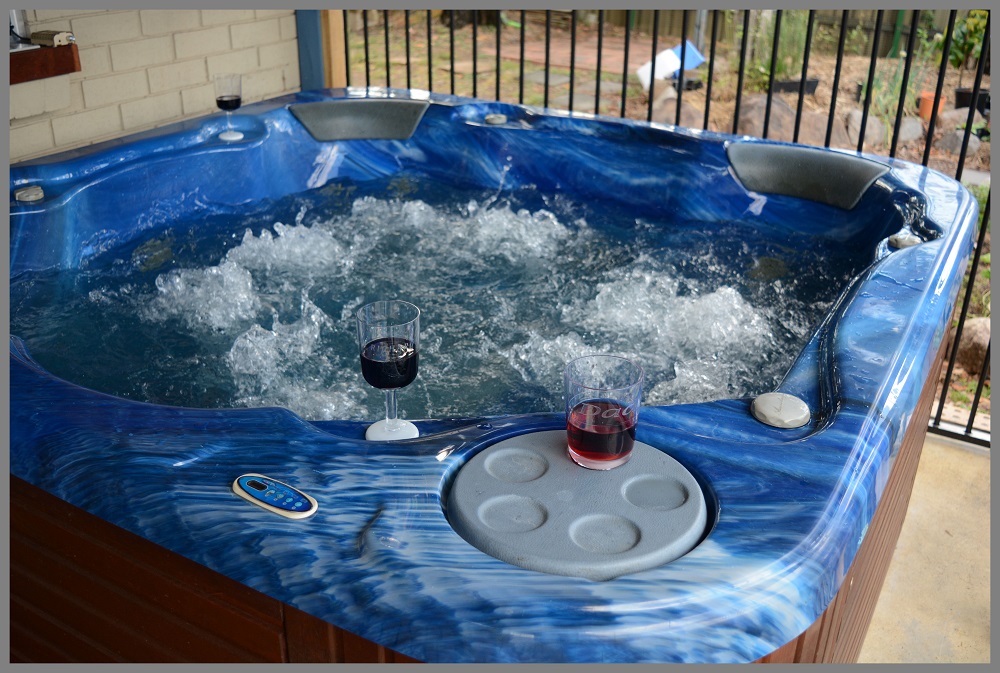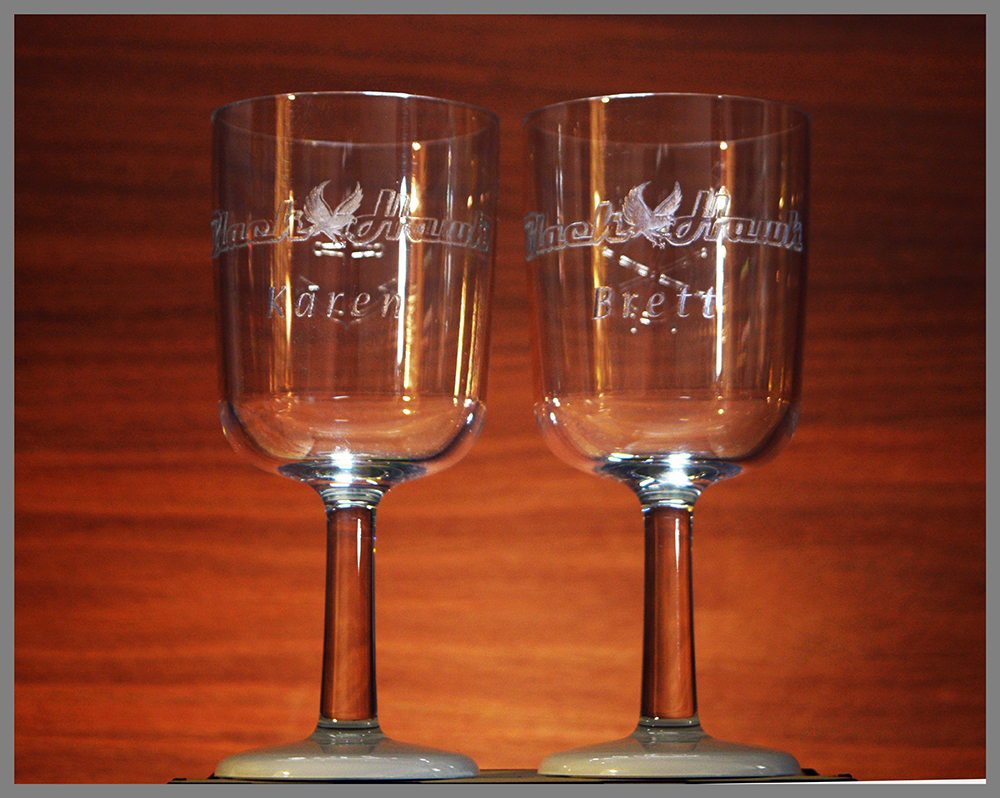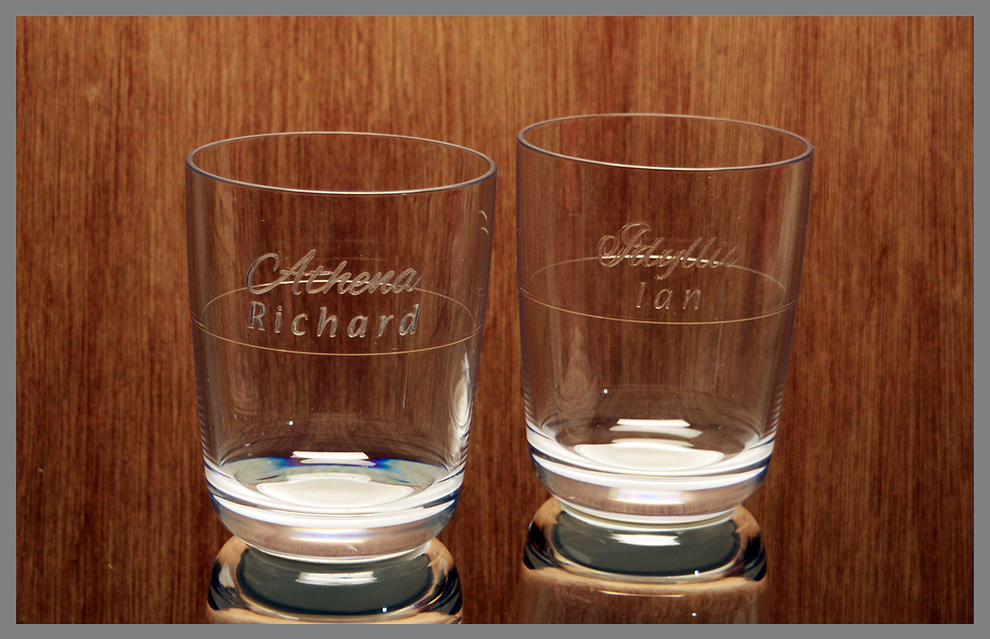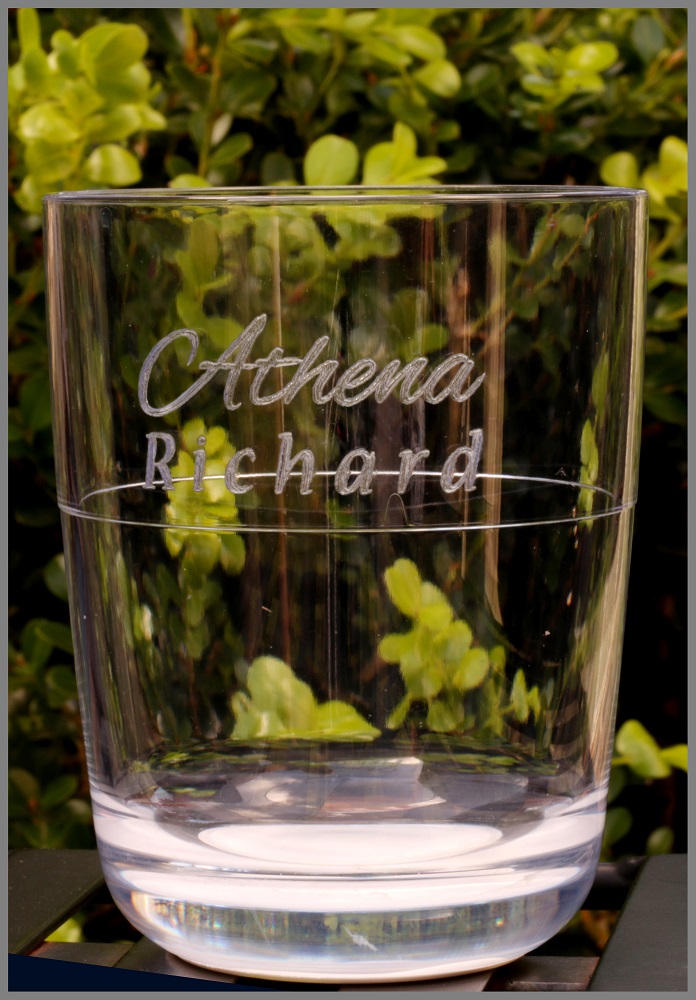Dicks Dinghy Ladders are proud to introduce Laser etched unbreakable drinkware.
We have sourced quality AUSTRALIAN MADE Tritan Glasses which we etch in house to order.
These glasses are perfect for use on your boat or ashore beach parties as there is no risk of broken glass.
Being customised they are easily identified so no more trying to track down your glass.
We can produce glasses with Name, Boat name, Company logo or any number of decorative symbols in any quantity you need.
A quality AUSTRALIAN made glass out of Tritan which is tougher & clearer than acrylic and is BPA free.
White non slip base.
Laser etched with name, message, logo etc.
A great gift or just to label your glass to keep an eye on it.
Available as a pair.
Optional attractive wooden gift box.


From our glass Manufacturer
- We use the best available materials that are not broken down by dish-washing chemicals – unlike polycarbonate
- Our designs are robust and without structural weak-points.
- Our automotive quality control procedures ensure consistency.
Making sense of mixed messages
With many conflicting and often misleading messages in the market regarding the sustainability of various materials and production methods. We have a clear position on the practices that do and do not offer a positive and sustainable way forward:
Renewably Sourced Materials:
Replacing products made from oil and natural gas with renewably sourced material sounds good but the reality is more complex.
The renewably sourced material has to be harvested, transported and converted in a refinery from an organic materials into a hydrocarbon based material. This process uses oil and natural gas and electricity.
The conversion process releases large amounts of the green-house gases CO2 and Methane.
The cost of renewably sourced material is 50-100% higher so products are more expensive – limiting their uptake
Their strength and toughness is less than the material they replace giving them a shorter life – so replacement is sooner and more waste is generated.
Widespread adoption will result in the diversion of large amounts of farm land and water from food production to, for example, the growing of bamboo – crowding out food production and causing food prices to rise.
The pressure on land resources may result in more clearing of forests.
The outcome can be
- little or no saving of oil, gas or coal
- release of green-house gasses during conversion
- higher product cost as it is more expensive
- shorter product life wasting resources and creating waste
- higher food costs
- pressure to clear forests
Compostable materials
The use of compostable plastics is a “Green-wash” solution: it sounds good but overall has a negative environmental impact
Worse, it gives the impression that habits of single-use products and excess packaging become guilt-free and so there is no need to change consumption behaviours.
For composting to work, the compostable plastic needs to be 100% sorted so here is no contamination, and then be composted in a commercial facility to ensure the 70 degree C heat and required humidity is present. Domestic composting is unlikely to have these conditions.
Currently there are few, if any, commercial composting facilities that will accept compostable plastics because of imperfect sorting.
Additionally, the composting process releases green-house gasses CO2 and methane. It is better to bury the waste.
Recycled products:
The use of recycled plastics holds promise but is being held back by a lack of availability of clean uncontaminated waste. As sorting and cleaning technology improves this is likely to change.
We are ready to test recycled products when they become commercially available.
Melamine and Bamboo/Melamine:
Bamboo-melamine material is a “Green-wash” solution, when the following factors are considered:
- Melamine and Bamboo-Melamine cannot be re-melted so cannot be recycled. They contaminate waste.
- Bamboo-Melamine products are “Mislabelled” as the bamboo is no longer bamboo after processing – see below
- They are more likely to chip and break that conventional plastics, resulting in a shorter life.
- Melamine is usually made from natural gas, with large quantities of green-house CO2 are released during its manufacture.
- Melamine moulding uses much more energy than plastic moulding.
Melamine is moulded at 345 degree C. If raw bamboo was added it would turn to ash, so the bamboo that is use
d is be in a modified form. As previously mentioned, increase in Bamboo production has knock-on effects relating to crowding out of food production and energy used during the conversion process.
The (US) Federal Trade Commission opinion is “that most – if not all – textile products labelled as a cellulose plant source, such as bamboo or eucalyptus, are mislabelled, because the plant source has undergone extensive chemical processing such that the resulting fiber no longer consists of the original plant source. Instead, the textile fiber must be referred to by use of one of the proper generic fiber names recognized and established by the FTC.”
The way forward:
- More long-life reusable products
- More products that can be recycled
- More use of recycled materials
- No compostable products until they become viable
- Renewably sourced material limited to agricultural waste and to niche products.
- Better labelling and better education of a product’s environmental credentials

